This post is about my obsessive search for any photograph of the Fuji Inn, formerly at 2505 Telegraph.
The story starts with Jack Kerouac. Well, before Jack, with Allen Ginsberg.
Allen Ginsberg lived in Berkeley from September 1955 until August 1956. Ginsberg lived in a back cottage at 1624 Milvia Street. I have never found a photo of what it looked like then.
This photo shows the two houses immediately north of his house.
Ginsberg stands in the backyard in this photo.
Kerouac stayed six weeks at Ginsberg’s cottage in 1955, spending most of his daytime at the cottage of Gary Snyder on Hillegass Street, absorbing Snyder’s knowledge about Buddhism. Nights were parties at Ginsberg’s, Bach and jazz, marijuana and wine and women and sex.
Jack Kerouac described the place as a “rose-covered cottage.” He wrote in The Dharma Bums, “The old rotten porch slanted forward to the ground, among vines, with a nice old rocking chair that I sat in every morning to read my Diamond Sutra. The yard was full of tomato plants about to ripen, and mint, mint, everything smelling of mint, and one fine old tree that I loved to sit under and meditate on those cool perfect starry California October nights unmatched anywhere in the world.”
In the spring of 1957, Kerouac brought his mother out to live in Berkeley. On May 6th, they got on a Greyhound bus in Florida and three days later were in California. They survived the trip on a diet of Coca Cola, aspirin, and bourbon. Special!
Poet Philip Whalen helped them to find an apartment not far from what had been Ginsberg’s rose-covered cottage that Kerouac remembered so fondly, and was now Whalen’s rose-covered cottage. Kerouac’s apartment was at 1943 Berkeley Way. This is what it looked like:
Joseph and Irene Young owned the building. The apartment had three spacious bedrooms. Kerouac wrote his first letter from Berkeley on May 15, 1957. He wrote his agent, Sterling Lord, reporting that he and his mother had found a furnished apartment and that they intended “to stay here for good as we are both very happy.” On May 24th he wrote Gary Snyder, speaking of the flowers – “out one window red flowers, out another white.” He described the apartment as “a fine furnished pad ground floor” but confessed to boredom: “I am bored in Berkeley because our stuff, typewriters, manuscripts, clothes, ain’t a-comin’ so fast.” He painted and attended lectures on Buddhism.
And he ate at the Fuji Inn, 2505 Telegraph. He wrote of “that fine fellow Tsufuraof” taking him to a “Japanese dinner of eel at Fuji Inn.”
In her memoir Rambler Rose, Teri Metcalf wrote of the Fuji Inn: “We only went out to eat about once a week. Our favorite restaurant was the Fuji Inn,a tiny locally owned establishment where we could get teriyaki dishes complete with rice scoop, salad,and tea for just a couple of dollars The salad was a few slivers of cabbage in a dressing of rice vinegar that could fit in the palm of your hand. The miso soup had one or two tiny cubes of tofu along with an equal number of green onion rings for color.”
Because of my appreciation for Kerouac, I can geek out about the Kerouac universe in Berkeley. I was thrilled beyond measure to find the photograph of the house with the apartment where he and his mother lived.
For four years I have been looking for a photo of the Fuji Inn. No luck.
In late June, I surrendered an evening to watching every YouTube video I could find about the Free Speech Movement and People’s Park. I’ve seen them all but I watched them again.
I am always profoundly moved by the spirit of the students who took part in the Free Speech Movement. Yes, also People’s Park, but the FSM really works for me.
But mostly I watch the videos to see buildings and signs. Sick! I know. But that’s how I get my geek on.
And on the night in question in June, I watched the videos again. Sixteen seconds into Streets of Berkeley 1969, posted by Fred Fischer, there it is – the Fuji Inn sign. Mission Accomplished! I was a seeker. I am a finder!
Seeing the video, I remembered another photograph with the SHOWTIME billboard.
I went back and looked more closely of this photo from Bloody Thursday in 1969. Sure enough, there it is, the Fuji Inn sign on the right. And yes – I know that the photo depicts the moments when James Rector and Alan Blanchard were shot.
So – in one night I went from zero to two photos of the Fuji Inn.
And then, more than three months later, I found ANOTHER photo from the same day.
In response to this post, I received this e-mail:
From: Joey Yovino-Young <joey@llamachew.com>
Subject: Fuji Inn
Hello Tom!
I’m a 57 yr. old Berkeley native who well remembers the Fuji Inn. I grew up 4 blocks from it. Epic times they were! And I for one am in eternal thanks for having received the best that America stood and strived for. The children of Berkeley then were living in a special time and space.
My dear friends, the Kumai’s lived above the Fujj during the 60s and early 70s. The older son, William, and I met in 1st grade at Emerson, and the Fuji was our snack spot (mainly Coke and soda and Japanese snacks), where my mom would take me as often as she could (she, sashimi; me, beef udon).
I asked William if his dad, now in his 90s, had any pics of the Fuji. Apparently not, but William forwarded the following: “George & Harold Murai were the original owners. (The Murai family married my uncle and my cousin). My father’s sister was the second and last owner. My parents helped out as waiters. All the owners were Nisei Japanese Americans.”
I’m glad I came across your site! It’s always a pleasure to see images and memories from an era I hold dear.
Cheers!
Joey
My mentor Paul Dickson uses the term “research rapture.” It’s a good term. I often look without knowing what I am looking for. The Fuji Inn has been my great white whale though – I have sought it.
Not many will grasp the joy of finding the photos. Trust me though, the joy of finding whether you are searching or not is a great joy. There are those who just have to get an answer when they start asking. It’s a special trait.
To finish up with Kerouac in Berkeley – his mother didn’t like Berkeley and by July, 1957, Kerouac had moved her to Orlando near the home of his sister, Nin Blake. The last letter he wrote from Berkeley was on July 5th. The plan to “stay here for good” lasted less than two months. By August 9th Kerouac was in Mexico, his mother in Orlando.
I asked my friend what he thought of the post. First reaction – he thought of the 1966 movie Blow-Up and suggested we watch it again. I know of his fascination with the entire movie and especially the purple paper passion scene – I agreed.
He continued, clicking PLAY on Ten Thousand Maniacs: “Poor Jack, hauling his mother all over the place. I dig the joy of finding though. Totally.”
He had just found a Raymond Loewy telephone at a garage sale in Crockett and was pretty excited. It is a great fit for his quarters. What about my obsessive search and my joy at finding and the sign and Kerouac and all that?


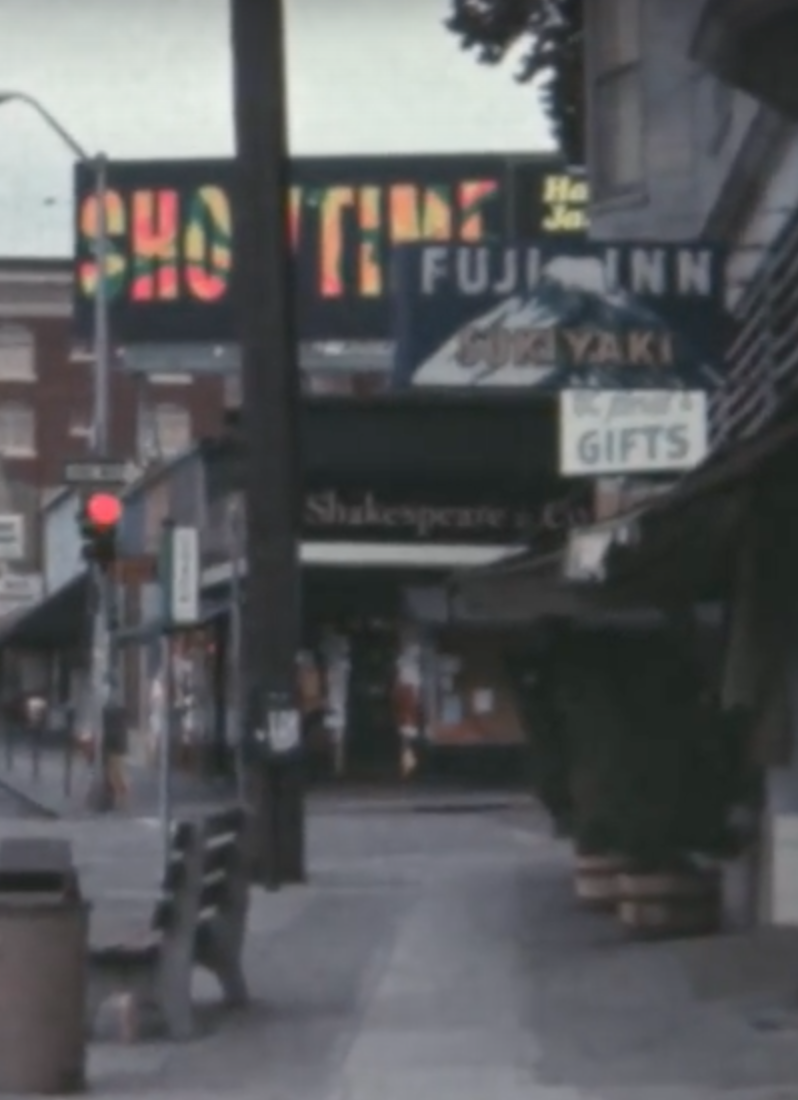
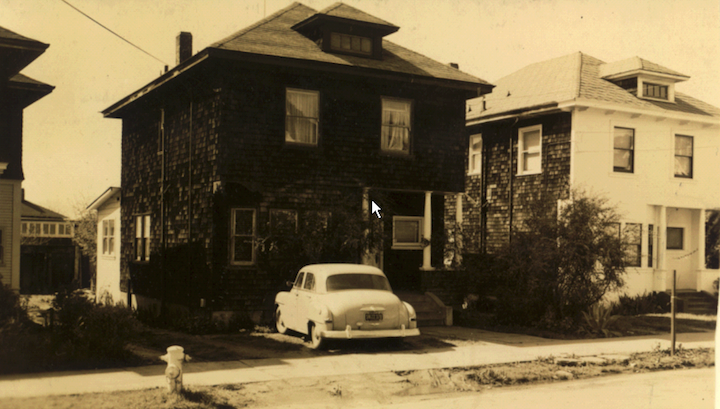
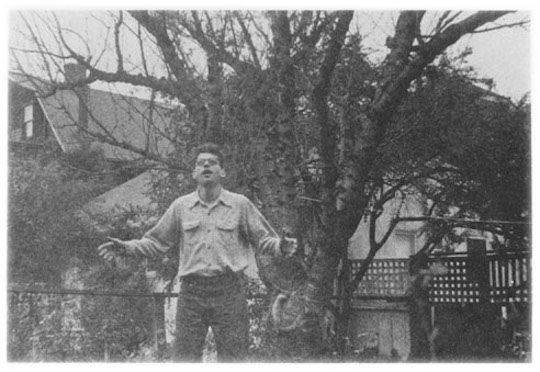

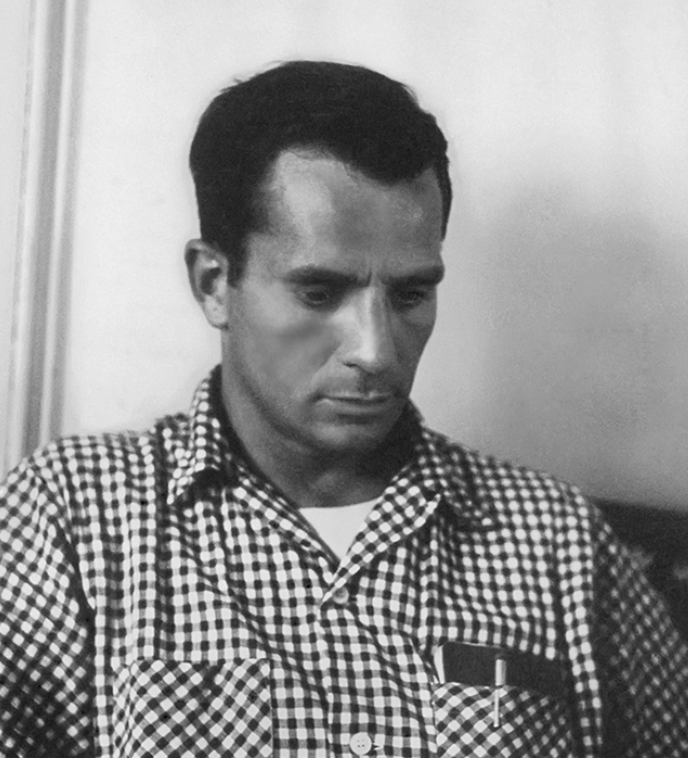
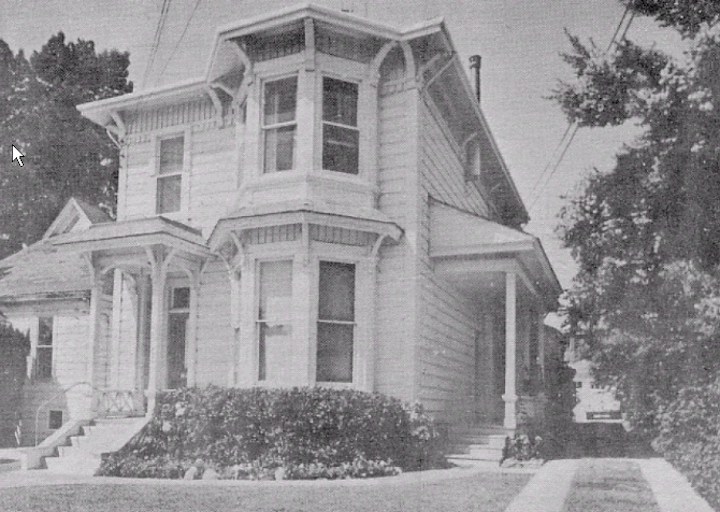
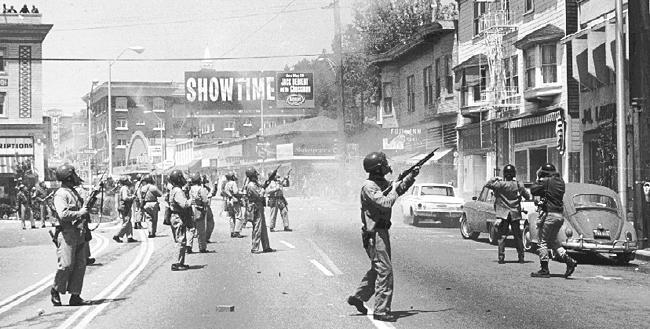
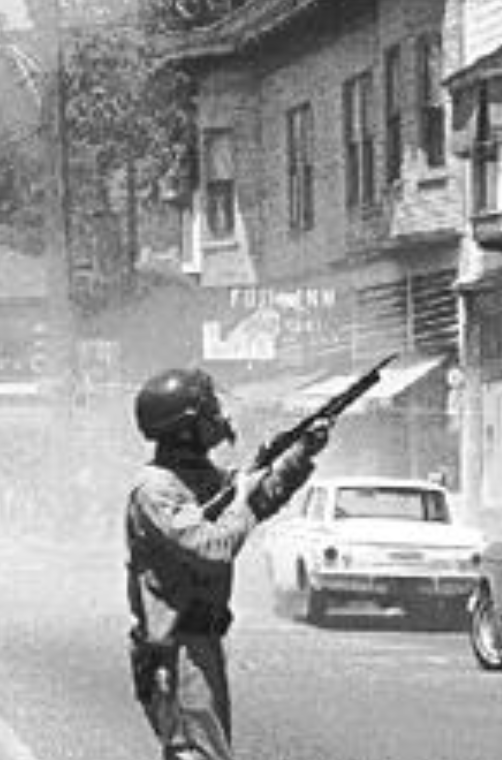
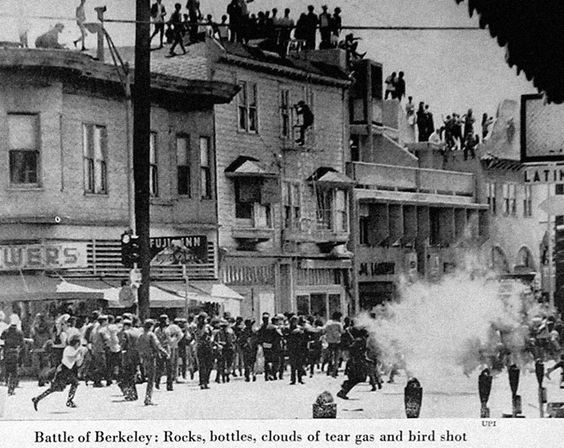
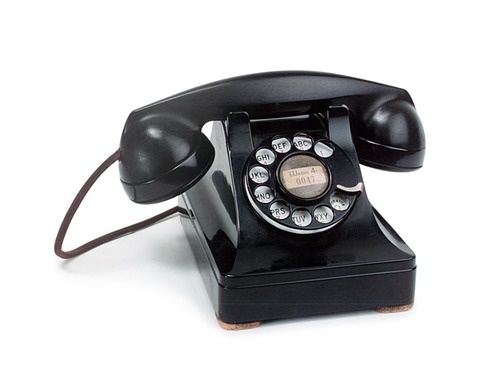
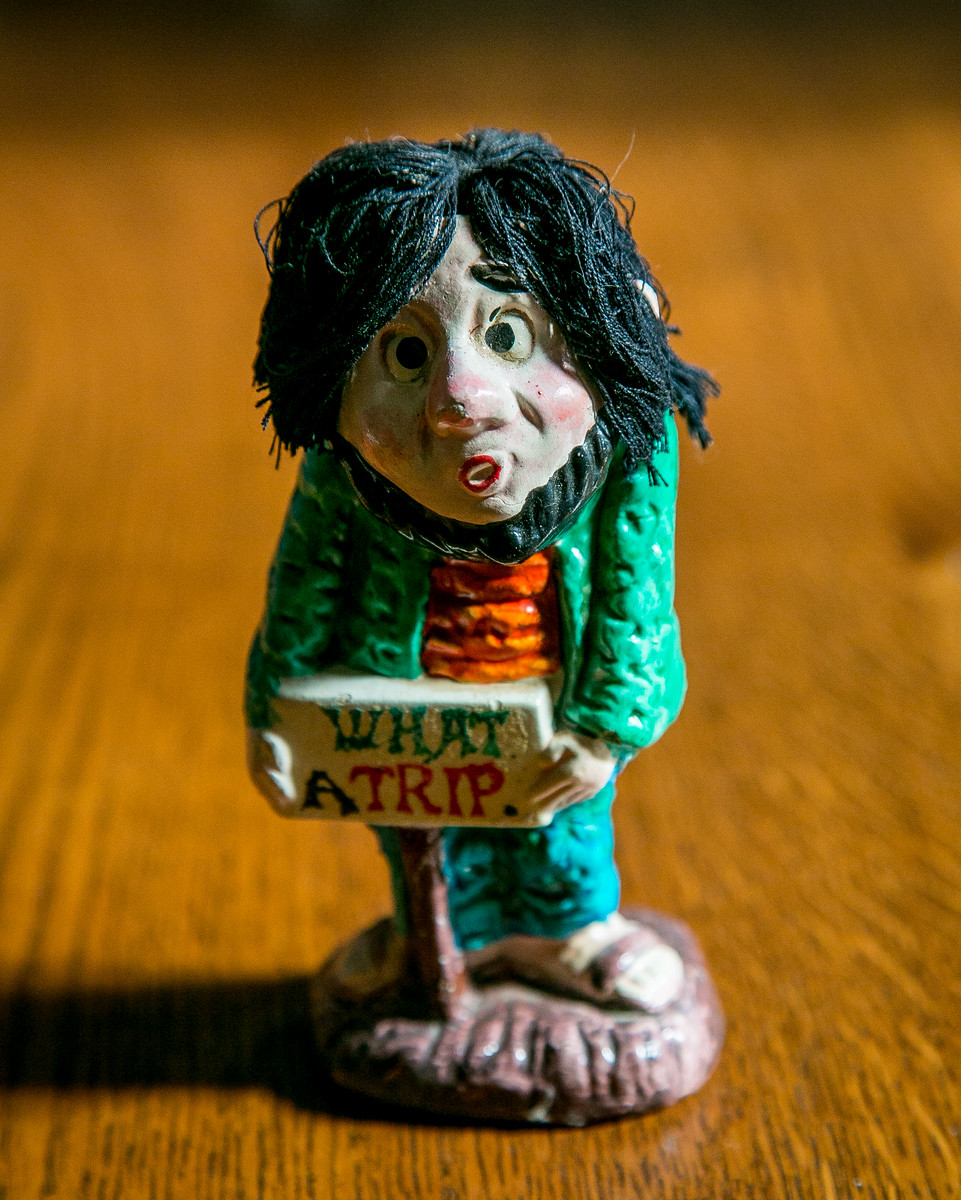
I’ve experienced the feeling several times doing family research. One particular instance led to discovering a piece of information that changed the course of history of the family for me and my brothers. A Eureka moment.
Dear Tom,
I too, immediately went to the Blow-Up movie in my mind.
Good post…wonderful research . You manage to make everything interesting.
P
OOH so excited to read this.
Mostly because I worked the shop ‘Sharks’ at 2505 Telegraph for 10 years (late 80’s) and know the space and the building intimately. So interesting to learn about its history and association with Jack Kerouac! I wish I knew about it during the time I was there.
Thank you, none the less!
Thanks, Tom, for this post of the Fuji restaurant in Berkeley and of Kerouac’s apartment in 1957. I knew of Kerouac’s apartment where he lived with his mother, and where I believe he received the initial shipment of On the Road. I was not aware of the Fuji restaurant on telegraph so that was a new discovery for me, which I appreciate. I lived in Berkeley at the time of the 1969 disturbance, or whatever we want to call it, and remember walking on telegraph Avenue that day with the smell of teargas all about. It’s nice to see Shakespeare bookstore there on the corner of Dwight Way and telegraph, which I first visited in 1967 as a High School student visiting Berkeley from Hollywood. I appreciate this post just as I appreciate your post on the Ginsberg cottage. By the way I share your geeky sense of curiosity. I often travel about searching for old movie locations in San Francisco and other historical curiosities that “geek” my imagination! Good work!